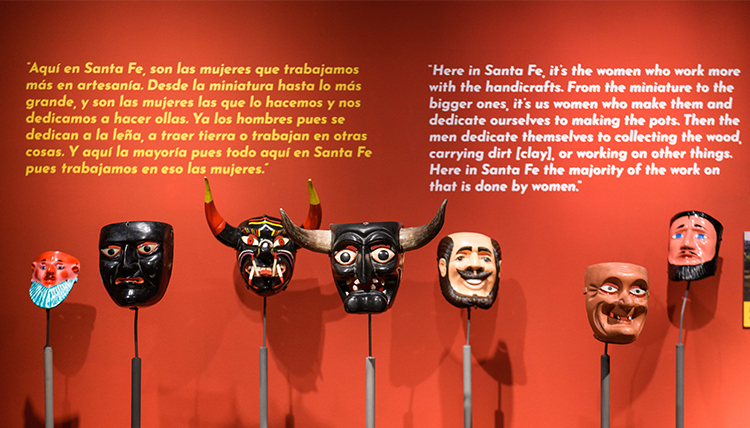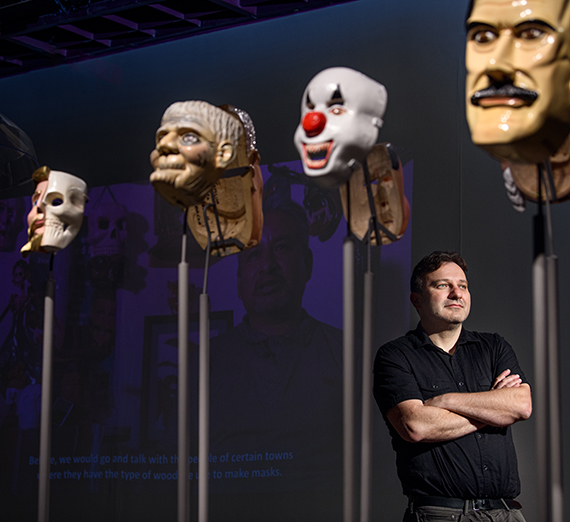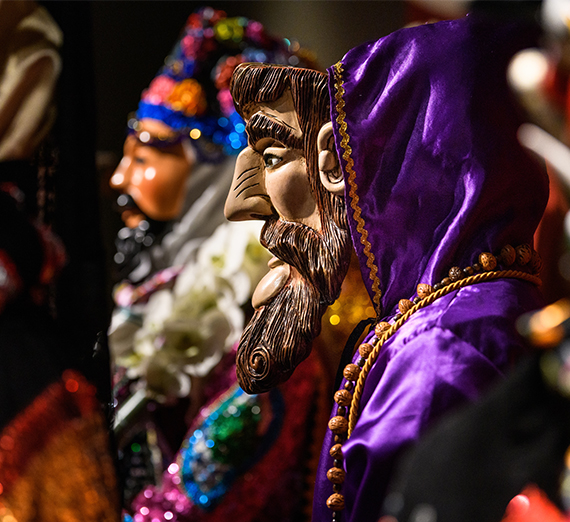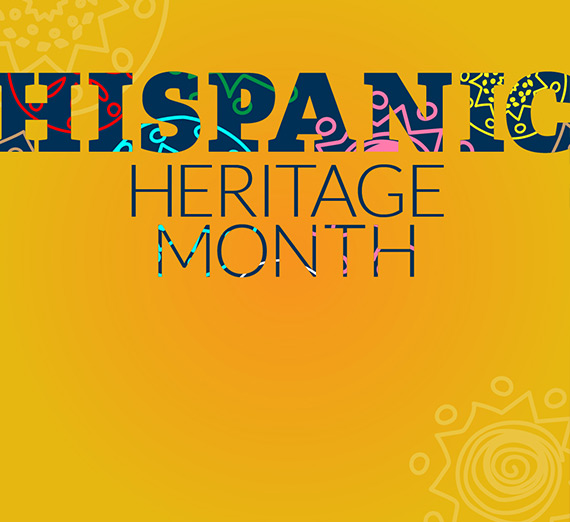Dancing With Life: Mexican Masks
Faculty research yields display at the Northwest Museum of Arts and Culture.
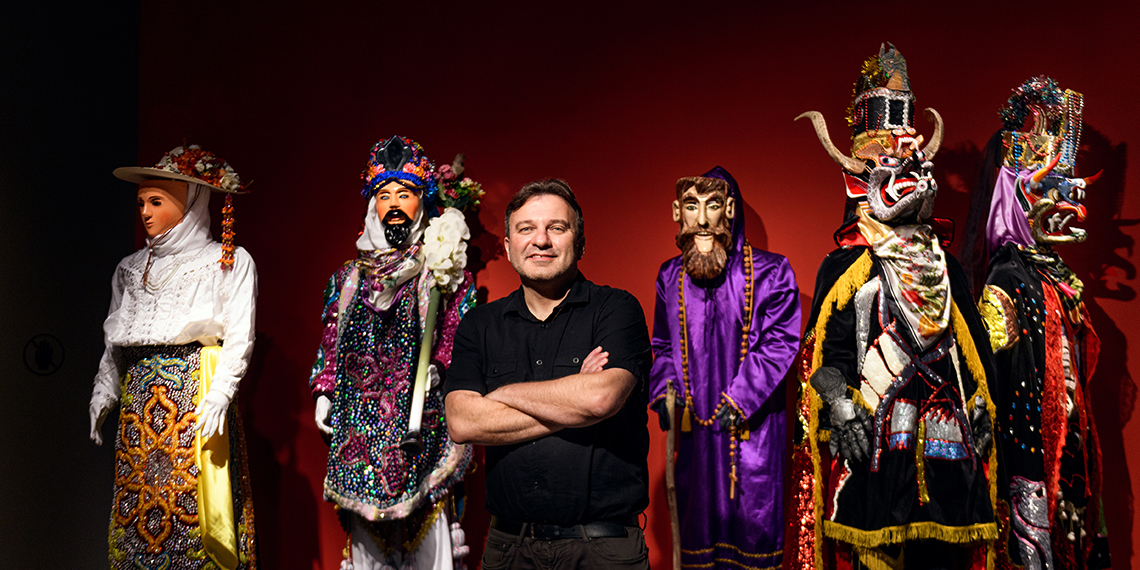
Pavel Shlossberg, associate professor of graduate communications and leadership in Gonzaga’s School of Leadership Studies, led the curation of a unique exhibition at Spokane’s Northwest Museum of Arts and Culture. Here, we learn a bit about the reasons and efforts behind this work.
Your first book on this topic was “Crafting Identity: Transnational Indian Arts and the Politics of Race in Central Mexico.” What spurred your personal and professional interest in this work?
It was the sense that art, creativity, performance, the work of cultural expression is central to understanding, to intercultural communication and inclusion. Engaging with this art form was a terrific, grounded way to get at how local cultural expression (and its depiction beyond the community) can support and (all too often) undercut collective and mutual sensemaking and understanding both within one community and across groups.
What were the critical components of how this research might manifest over time?
Initially, the key question was whether practitioners and folks in the community would recognize themselves and their art/creativity within the account, considering that I am an outsider. Does my account have fidelity, does it ring true to the community actors and performers? Does it do justice to them? Then those questions extended to interrogating, critiquing and displacing some of the received and dominant ways that museums, catalogs and commercial sources have depicted and discussed Mexican (Indigenous and mestizo) “danzas” and masks and their artists and performers. My alternative account seeks to counter the stereotypes and reductive tropes that routinely muffle, exoticize and inflict symbolic and other forms of violence on the community.
What fostered the vision for a public exhibit?
The specific collaboration with the MAC is itself quite fortuitous. Gonzaga history faculty member Laurie Arnold is also a board member at the MAC, which has had a collection of 500 Mexican masks inherited from the former Museum of Native American Culture housed on the University campus. It is an extensive collection, but there was hardly any documentation, and what existed was mostly poor or incorrect. To do justice to the masks, it would be necessary to center artists and dancers and their voices and community performances and celebrations. Happily, this vision resonated with the Museum, which arranged a grant that allowed me to undertake my trip to Michoacan where I knew artists, dancers and community masking customs. Documentary work allowed us to mount and exhibit masks within the proper performance and community context, centering artists and community voices in discussing the art form and its meanings.
As a communications and leadership scholar, what did you learn about the process of curating an exhibit?
It takes a village! I am indebted to the work and wise guidance of my colleagues at the MAC, my graduate assistants at Gonzaga and Jundt Art Museum staff. I feel honored to have worked with some ethical and mindful communicators and leaders who have not taken the easiest route but have been willing to tell a more meaningful and complex story that takes more effort, intentionality and time to tell.
“Dancing With Life: Mexican Masks” continues at the Northwest Museum of Arts and Culture through April 16, 2023. The museum is located at 2316 W. 1st Avenue.
- Arts & Culture
- Academics
- Diversity & Inclusion
- School of Leadership Studies
- Academic Vice President
- Master of Arts in Communication and Leadership
- Gonzaga Magazine

